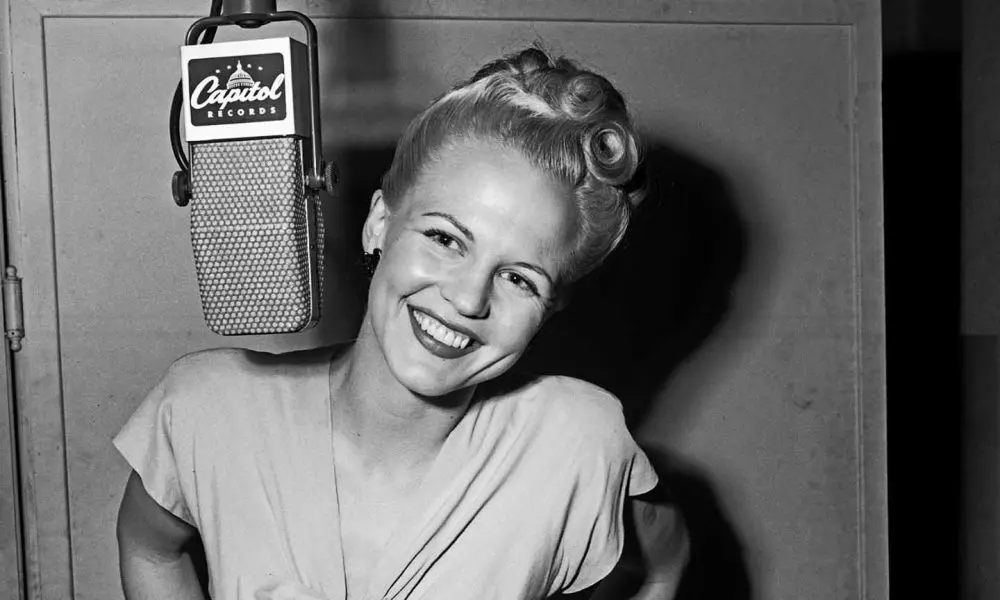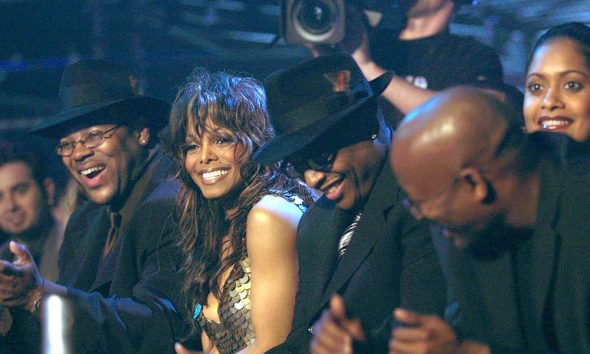Peggy Lee, The Songwriter: Ten Tracks Penned By The Iconic Artist
Back when Lee began writing songs, it was far from the norm for an artist, let alone a female artist. It’s yet another reason why she remains an iconic figure.

Peggy Lee’s impact on the music industry can hardly be overstated. She’s beloved by artists as varied as Paul McCartney and Billie Eilish. While many focus on her performances, however, a lesser known side of her talent is her songwriting.
Lee began writing songs with her husband, jazz guitarist David Barbour, after they married in 1943. The marriage may not have lasted, but Peggy would continue to write over the course of her decades-long career. By the end, she had credits on more than 270 songs. In 1999, she was inducted into the Songwriters Hall of Fame.
Back when Lee began writing songs, it was far from the norm for an artist – especially a female. It’s yet another reason why she remains an iconic figure. In celebration of the recently released From the Vaults, Vol. 3, which highlights rare tracks currently unavailable on streaming platforms, here’s a selection of ten songs written by Peggy Lee.
Listen to From the Vaults Vol. 3 now, a release which contains the Peggy Lee composition “I Love You But I Don’t Like You.”
What More Can A Woman Do?
Written in 1944 and released in 1945, “What More Can a Woman Do?” was Lee’s first composition to be recorded. Written shortly after she was married to David Barbour, it’s a love song. “I was washing dishes and just sang out my love for him,” she reflected in Miss Peggy Lee, An Autobiography.
Five months after the release of Peggy’s original, Sarah Vaughan recorded the song, accompanied by Dizzy Gillespie and Charlie Parker, imbuing the song with a new emotional weight. The song was also featured as the title track on Big Maybelle’s 1960 album. She once again changed up the instrumentation and shifted the song into an R&B frame, reflecting just how versatile Peggy’s lyrics could be.
I Don’t Know Enough About You
Peggy’s first songwriting hit was 1946’s “I Don’t Know Enough About You,” another co-composition with her husband David Barbour. The song peaked at number 7 on the popular music charts. The song mixes humor and vulnerability as Lee sings about a lover she just can’t figure out. “I know a little bit about biology / And a little more about psychology / I’m a little gem in geology / But I don’t know enough about you,” she laments.
Mañana
1948 was the year Peggy landed her first No.1 hit, “Mañana (Is Soon Enough for Me.)” The track stayed at the top for nine weeks, remained on the charts for 21 weeks, and was Capitol Records’ most successful single by a singer-songwriter until the Beatles came along.
Lee was inspired to write the lighthearted song after her husband survived a nearly fatal ulcer and the couple took a trip to Mexico while he recuperated. “I was so impressed with the seemingly happy, relaxed spirit of the place that… it inspired me to write. David got his guitar out, and we had so much fun putting it together.”
How Strange
Moving into the 1950s, Lee began to experiment with different songwriters and different mediums. Her first song for a film soundtrack was “How Strange” from The Bullfighter and the Lady. She worked with composer, arranger, and conductor Victor Young on the track, and the two would go on to form a creative partnership. The song’s romantic lyrics – “How strange, how still / I seem to be losing my will / An angel is breathing on me / And it’s making me see I’m in love” – are a perfect fit for a film about love and danger.
Where Can I Go Without You
“Where Can I Go Without You” was recorded in the same session as “How Strange,” and marked another creative collaboration with Victor Young. The song peaked at only 28 on the charts, but it would become one of Lee’s most successful ballads, covered by a long list of artists including Nat King Cole, Natalie Cole, Dean Martin, Nina Simone, Dionne Warwick, and Feist.
Young’s death in 1956 meant their partnership was short-lived, but it left a deep impression on Lee. “When Victor Young asked me to write some lyrics for him, you can’t imagine how thrilled I was,” Peggy later wrote in her autobiography. “He was like God to musicians. He was small in stature, but a giant nonetheless… When he talked to you he would make little karate chops with his hand, as if he were measuring off bars of music. I suppose the whole world was music to him.”
He’s a Tramp
The 1955 Disney film Lady and the Tramp showcased the growth of Peggy’s talents yet again. It was her first complete film score, and she worked with composer Sonny Burke to write the now-beloved songs, including “He’s a Tramp,” “Bella Notte,” and “La La Lu.” She also lent her singing and speaking voice to four of the film’s characters: the human mother Darling, the Pekingese Peg, named after Peggy herself, and the Siamese cats Si and Am. “He’s a Tramp” is Peg’s big song, a standout moment.
In her autobiography, Lee wrote, “No question, every person that worked on the film was touched by Mr. Disney’s genius. An Italian award was given to Lady and the Tramp that read, ‘In this troubled world, a visible island of poetry.’ Well said.”
Fever
Lee’s signature song, “Fever,” was not actually an original number. Written by Eddie Cooley and Otis Blackwell, the latter of whom was credited with the pseudonym “John Davenport,” the track was first released by American R&B singer Little Willie John in 1956. Two years later, Lee released her version of the track, with a collection of new lyrics and a different arrangement. Peggy’s lyrics about Romeo and Juliet and Captain Smith and Pocahontas were so memorable that they have been sung in most subsequent covers of the song.
I’m Gonna Go Fishin’
Another one of Lee’s creative collaborators was the one and only Duke Ellington. Lee had already recorded a number of Ellington’s songs for her catalog by the time he invited her to write lyrics for one of his compositions. “I’m Gonna Go Fishin’” was intended for the 1959 courtroom drama Anatomy of a Murder starring James Stewart – a strikingly different genre of film than Lee was used to writing for.
She later recalled her writing process in her autobiography: “I remember [Ellington] bringing me the tape with the theme music from the movie Anatomy of a Murder. He just said, ‘Here you are, Your Highness – write this.’ (Duke had nicknamed me ‘The Queen.’) It seemed like a challenge to write a lyric about a murder, but for those of you who write lyrics… I just got lucky and found the poetic symbol: the fisherman. Jimmy Stewart played the detective who liked to go fishing and think about solving a case. The man who committed the crime, the one who will be caught, was the trout… When I gave Duke Ellington the lyrics he liked it all, and that was enough for me.”
Stay With Me
Peggy began collaborating with Quincy Jones in the early 1960s, and he would go on to arrange and conduct two of her albums. The duo also co-wrote a number of songs together, including two tracks for the 1966 comedy Walk Don’t Run starring Peggy’s friend Cary Grant. Those songs were “Happy Feet,” the film’s theme, and “Stay With Me,” a breezy track with salsa-inspired guitars. Lee didn’t sing either of them in the film, but she recorded her own versions the same year.
One Beating A Day
In the early 1980s, Peggy tried to write her first autobiography, but ended up writing a one-woman show. The short-lived Broadway show combined a collection of her hits alongside 16 new songs, written by Lee and composer Paul Horner. One of the show’s most memorable songs was “One Beating A Day,” which recounted the abuse Peggy suffered at the hands of her step-mother. In lesser hands, this would be a disturbing and sad tale. Peggy’s dark sense of humor, however, transformed it into a full-on Calypso musical number. “[Telling my story] with songs made it more positive, and that’s the whole idea,” she explained of the show. “She didn’t make me hate anybody. She only made me love everybody. The joke is on her.”
Listen to From the Vaults Vol. 3 now, a release which contains the Peggy Lee composition “I Love You But I Don’t Like You.”












